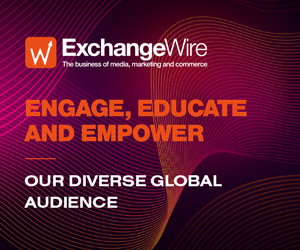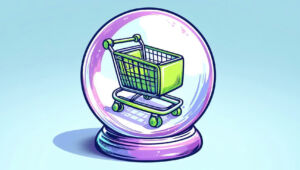What the Ad Tech Industry Makes of the AdCP Agentic AI Standard
by on 23rd Oct 2025 in News

We look at ad tech’s first open standard for agentic AI. How does it work, and what should advertisers be doing now?
Last week, a number of ad tech industry members came together to launch the Ad Context Protocol (AdCP), an open standard designed to support AI agents in planning, transacting, and optimising advertising campaigns. Founding members of the standard include Scope 3, PubMatic, Ebiquity, and Yahoo, among others.
It addresses the rapid rise of autonomous agents in ad tech – software that communicates with people, data, LLMs, and ad platforms to carry out advertising – which has so far increased fragmentation in the ecosystem.
Media buyers and agencies have wasted a great deal of time attempting to navigate this fragmentation due to custom integration work with each new platform, inventory scattered across different platforms, as well as complicated interactions between AI agents or automation tools and advertising platforms.
AdCP defines a standardised interface for agent-to-platform and agent-to-agent communication, allowing buyers and sellers to connect their agentic systems. In effect, the shared infrastructure functions as a common language between different players within the ad ecosystem, bringing the entire marketplace together.
Through AdCP, advertisers can connect to media companies or publishers directly in order to run and optimise campaigns towards a shared objective.
For publishers and media owners, AdCP creates more audience monetisation opportunities by defining a standard way of representing inventory, pricing, and packaging.
Benefits for ad tech platforms include being able to expose their platform capabilities to external agentic platforms through the common standard.
We asked a range of leading voices in ad tech what they make of the new standards, and what they think advertisers should be doing now.
A coordination challenge
The launch of AdCP represents a pivotal step toward giving agentic advertising both a shared language and the infrastructure it needs to scale responsibly.

The Open Standard for Agentic Advertising is the connective tissue where automation meets accountability. But agentic AI isn’t just another automation layer. It’s a coordination challenge. The companies that succeed will treat it as infrastructure, not innovation theatre. The key is to invest in clean data, shared protocols, and human oversight from day one.
Open standards only work when everyone builds on them. Advertisers should prioritise readiness: define objectives, validate partner compliance, and test agentic workflows in transparent environments.
DSPs and SSPs must align on signal quality, identity resolution, and approval logic, while publishers should expose first-party context in ways agentic systems can understand and use.
Agentic AI will only drive performance if its signals, decisions, and approvals remain explainable and accountable to humans. That’s the future we’re building toward: automation you can trust.
Melisa Kindelan, Head of Sales & Business Development, BRAVE
The big question now: Adoption
Buying ads across the open web can feel complex, fragmented and time-consuming – especially when compared to the frictionless experience offered by walled gardens. As an AI company that has integrated custom agents across our targeting, measurement and optimisation products, we see the Ad Context Protocol (AdCP) as a breakthrough opportunity to change that dynamic.
By standardising how agents and platforms communicate, AdCP can simplify workflows, improve operational efficiency, and drive smarter, more transparent buying decisions. This could radically redefine the way media buyers experience programmatic, turning today’s manual, siloed processes into automated conversations between trusted systems.

The big question now is adoption. Early support from major players is promising and, at Anonymised, we’re 100% behind it. But progress will depend on DSPs and advertisers embracing the standard and helping to shape its evolution, especially around measurement. This is the moment for the industry to prioritise long-term, strategic outcomes over short-term tactical gains.
Mattia Fosci, Co-Founder and CEO, Anonymised.io
Start small but start now

The launch of AdCP feels like the next logical step in digital media evolution. It's about creating a shared language for smarter, more transparent decisioning – exactly how we think at Chalice. If AdCP takes hold, it could connect intelligence across platforms, helping AI systems act with real context and accountability. This pushes the industry toward what matters: decision quality, media integrity, and better outcomes for advertisers and publishers alike.
What should advertisers be doing right now? Start small but start now. Learn how these standards work, audit your stack for interoperability, and define what 'good' means for your brand. Engage with partners testing AdCP. The advertisers who get involved early will help shape how intelligence and values drive every media decision.
Freddie Turner, Managing Director EMEA, Chalice
The winners won’t just automate, they’ll differentiate
The launch of AdCP signals an important shift in how the industry is thinking about automation. If widely adopted, it could mark the transition from real-time bidding to real-time reasoning, where machines don’t just transact faster, but negotiate more intelligently. Just as OpenRTB standardised how impressions are bought and sold, AdCP aims to standardise how AI agents communicate deal terms, objectives and constraints.

However, while AdCP standardises the communication layer, the real differentiation will sit in the logic each agent brings to it. If agents can reason using richer contextual signals, attention metrics or outcome data, rather than just price floors, we may finally see more transparent, performance-driven trading emerge.
So what should advertisers be doing now? Preparing their advantage. That means defining the data, logic and optimisation principles they’d want their agent to act on. In an agentic marketplace, the winners won’t just automate, they’ll differentiate.
Peter Mason, CEO and Co-Founder, illuma
AdCP can preserve the openness that made programmatic thrive, while preventing another drift toward walled gardens
The launch of AdCP marks an important moment for digital advertising. OpenRTB revolutionised automation, but without consistent enforcement, publishers (especially smaller ones) were left overburdened trying to implement tools like ads.txt and sellers.json, leading to gaps in transparency and verification.
AdCP has the potential to correct that by making compliance a shared responsibility across the supply chain, with SSPs and DSPs acting as regulatory stewards, not just participants.

What’s exciting is that AdCP goes beyond programmatic, encompassing the entire workflow, collapsing the complexities of programmatic integration through the use of agent-to-agent workflows, giving more time for human oversight to ensure quality and governance. If managed correctly, AdCP can preserve the openness that made programmatic thrive, while preventing another drift toward walled gardens.
For advertisers, now is the time to lean in, help shape the standard, and contribute to rebuilding openness with clear governance, compliance, and shared accountability at its core.
Alex Powell, CEO, Pixels
The priority for advertisers is understanding how their desired outcomes fit into this AI-enabled strategy and integrating first-party data effectively
We stand at a turning point where AI systems no longer just execute but collaborate, making complex decisions in real time. While new AI tools promise planning, targeting, buying, optimisation, and creative generation, fragmented standards risk creating an ecosystem where agents speak different languages.

The AdCP initiative takes the first step towards a common protocol for AI collaboration. From planning to buying, every agent can exchange information asynchronously and securely, enabling machine-to-machine coordination across the full campaign lifecycle. With the ability to connect millions of data points in milliseconds, apply machine learning for outcome-driven decisions, dynamically optimise budgets, and link supply, demand, and creative intelligence, the industry needs centralised, standardised solutions to move from manual coordination to intelligent collaboration.
For advertisers, the priority is understanding how their desired outcomes fit into this AI-enabled strategy and integrating first-party data effectively to ensure decisions align with goals and maximise value.
Audrey Boisumeau, VP enterprise solutions UK and US, Azerion
Uniting programmatic and social platforms
Taking us closer towards creating a more open and intelligent ad ecosystem, this protocol has the potential to unite the best of two worlds: bringing together programmatic’s interoperability and transparency with the native, outcome-driven quality of social platforms.

But AdCP is a foundation for autonomous media management. While many early participants come from web and CTV backgrounds, there is a vital need for more mobile, and in-app experts to be part of this conversation. The depth of contextual data, SDK-level access, and privacy-first signals make mobile a critical pillar in enabling agentic, cross-channel buying.
For advertisers, as well as staying informed and starting to experiment, ensuring their data, creative, and measurement workflows are API- and AI-ready will help them both shape the current direction of agentic travel and keep operations future-proof.
Alex Stil, CSO, Verve
Can this work within the complex trading structures of media?

On the face of it, the new AdCP standards are a welcome attempt to standardise, simplify and speed up end-to-end advertising. But the devil’s in the detail. There are big questions around data governance, an over-reliance on AI, and – crucially – whether any of this can work within the complex trading structures of media. Ad tech also has a bad habit of turning simplification into even more complexity.
If you’re an advertiser, agency, or ad tech platform, now’s the time to get your head around how these standards are being implemented. Because if you’re not already talking about agentic disruption to the ad tech stack, you soon will be.
Barney Worfolk-Smith, Chief Growth Officer, DAIVID
Agentic AI represents the next major frontier for campaign effectiveness
AdCP is arriving at a critical moment for our industry. As agentic AI rapidly develops, we must establish open, interoperable standards for how these systems collaborate across the advertising ecosystem.

Agentic AI represents the next major frontier for campaign effectiveness, promising to redefine success by delivering unprecedented clarity into true consumer engagement. By connecting agentic systems under a shared protocol, AdCP can improve efficiency in media planning and buying and streamline monetisation for publishers – helping them navigate an emerging AI-overview search landscape.
AdCP is the necessary standard for the open internet; a vital step toward a more transparent, intelligent, and human-governed advertising ecosystem. This is an initiative the entire industry must embrace to ensure these essential standards are effective, inclusive, and future-proofed for the age of AI.
James Colborn, VP Data, Teads











Follow ExchangeWire